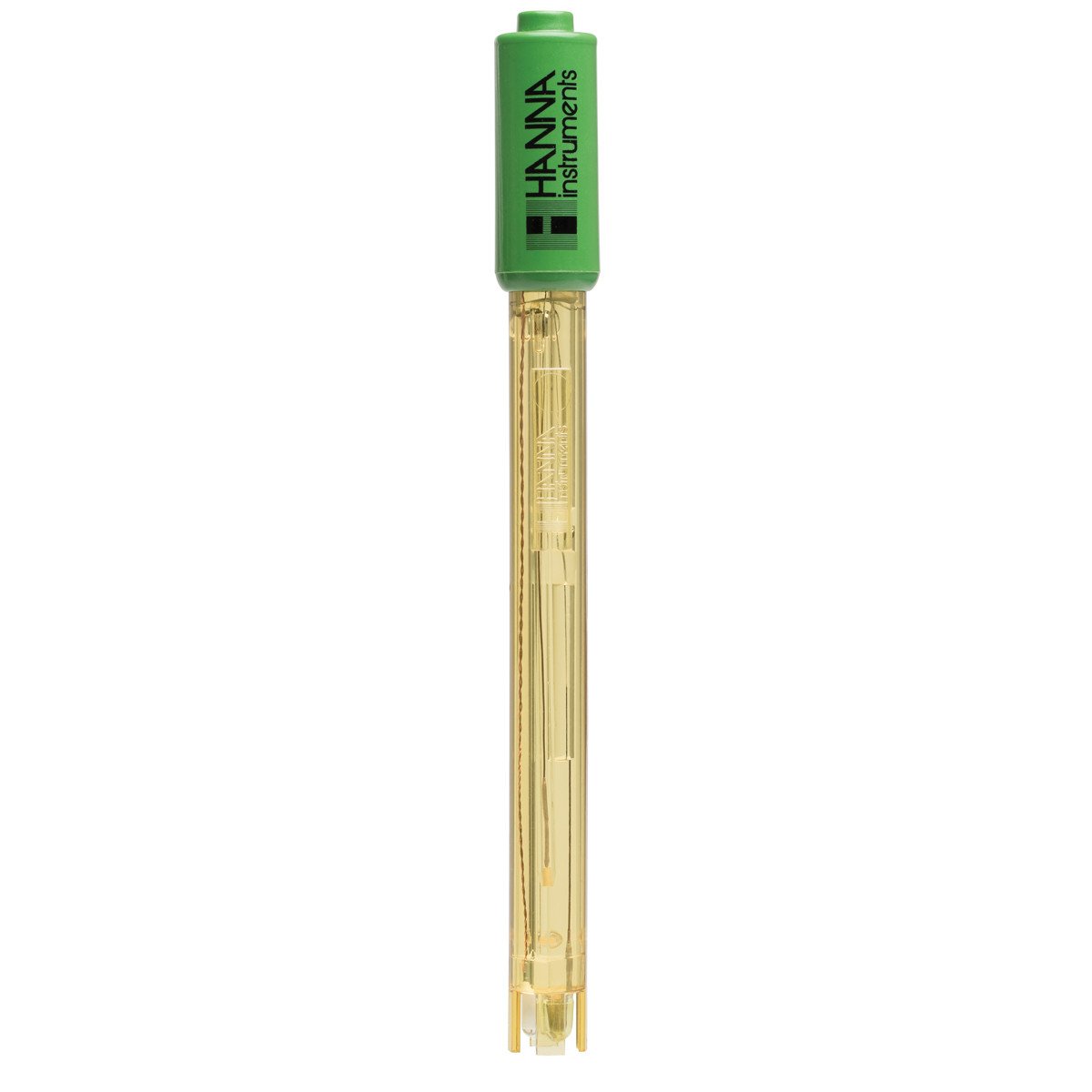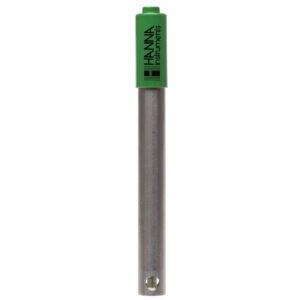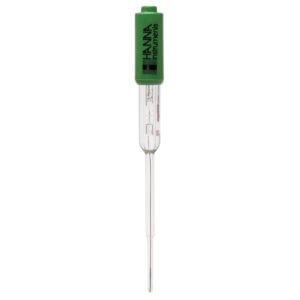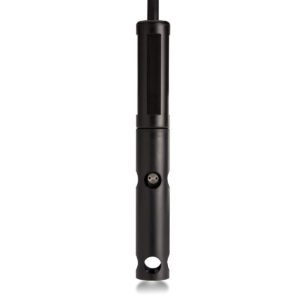Hanna Instruments offers a wide variety of pH electrodes that are designed for many different applications. The type of glass used for sensing pH, bulb shape, body material, type of junction, type of reference and electrolyte used are just some of the design considerations.
The HI12303 uses general-purpose (GP) glass, spherical bulb, polyetherimide (PEI) body, single ceramic frit, and double junction.
Spherical Bulb
The spherical bulb is for general purpose use. Other tip shapes include conic for penetration and flat tip for surface measurements.
PEI Electrode Body
The PEI (polyetherimide) electrode body is suitable for a wide range of applications and excels in field measurements due to its durability. The shielding around the spherical glass tip minimizes breakage due to accidental bumping or dropping of the electrode. The PEI plastic is a high-quality plastic that is chemically resistant to many harsh chemicals.
Double Junction Reference
A double junction electrode has an internal compartment surrounding the reference wire. Silver ions are present in the electrolyte of the internal compartment, which houses the Ag/AgCl reference wire; the electrolyte outside this compartment is silver free. The double junction design means that virtually no silver from the electrode enters the sample. This design allows measurement in applications where silver ions in the sample are undesirable or silver precipitates on the junction are likely to form.
Quick Connect Din Connector
The HI12303 uses a Quick Connect DIN connector that makes attaching and removing the probe simple and easy. This type of connector is proprietary to the meter. See the specifications table for compatible meters.
Single Junction Versus Double Junction pH Electrodes

Conventional electrodes are normally single junction. As depicted by the figure above, these electrodes have only a single junction between the internal reference wire and the external solution. Under adverse conditions, such as high pressure, high temperature, highly acidic or alkaline solutions, the positive flow of the electrolyte through the junction is often reversed resulting in the ingress of sample solution into the reference compartment. If this is left unchecked, the reference electrode can become contaminated, leading to complete electrode failure. Another potential problem with single junction electrodes is the clogging of the junction due to silver chloride (AgCl) precipitation. Silver can be easily precipitate in samples that contain Tris buffer or heavy metals. When the electrolyte solution makes contact with the sample, some AgCl will precipitate on the external face of the junction. The result is drifty readings obtained from the sensor.
Hanna’s double junction system, as the name implies, has two junctions, only one of which is in contact with the sample as shown in the figure. Under adverse conditions, the same tendency of sample ingress is evident. However, as the reference electrode system is separated physically from the intermediate electrolyte area, the contamination of the electrode is minimized. The likelihood of clogging of the junction is also reduced with a double junction electrode since the outer reference cell uses a fill solution that is “silver-free”. Since there is no silver present, there is no precipitate that can form to clog the junction.
| Specification Name | Detail |
|---|---|
| SKU | HI12303 |
| Description | combination pH electrode |
| Reference | double, Ag/AgCl |
| Junction / Flow Rate | ceramic, single / 15-20 µL/h |
| Electrolyte | gel |
| Max Pressure | 2 bar |
| Range | pH: 0 to 12 |
| Recommended Operating Temperature | -5 to 70?C (23 to 158?F) |
| Tip / Shape | spheric (dia: 7.5 mm) |
| Temperature Sensor | DIN model only |
| Amplifier | DIN model only |
| Body Material | PEI |
| Cable | coaxial; 1 m (3.3’) |
| Recommended Use | field applications, soil solution, photographic chemicals, laboratory (general use) |
| Connection | Quick Connect DIN |










